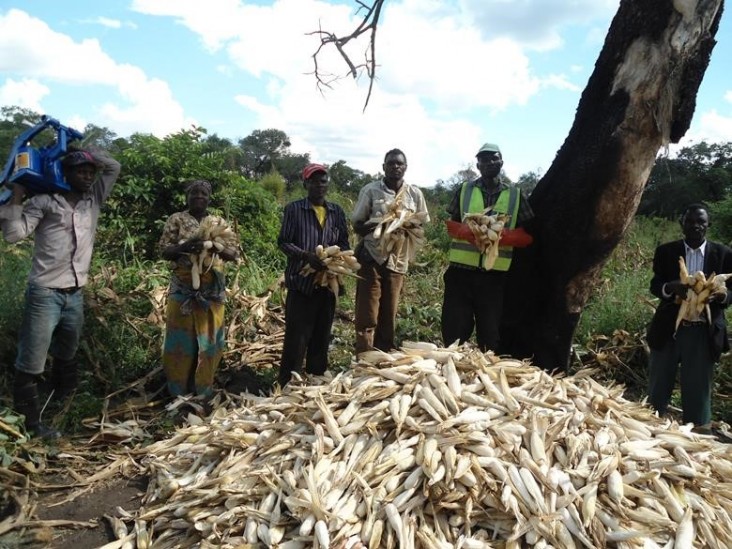
September 2017—Thirty years ago, families in Mozambique’s village of Nhantumbi could rely on regular rainfall to cultivate their crops and feed their families. Since then, unpredictable rains, deforestation and unsustainable agricultural practices have caused a steep decline in productivity in Nhantumbi and neighboring villages.
The 2015/2016 El Niño exacerbated the situation, bringing the worst drought the area had seen in three decades. Facing total crop failure, households were forced to look elsewhere for food. Many migrated closer to the Zambian border to find work.
Amelia Daudo*, caregiver to a household of five, recalls how, beginning in September 2015, she and other community members spent eight months working long days at distant farms, receiving paltry food supplies in payment. “I had never experienced such a situation in my entire life,” she says.
To help people like Daudo, USAID partnered with World Vision International, the U.N. Children’s Fund (UNICEF) and the U.N. World Food Program to provide emergency food and nutrition assistance in the hardest hit communities throughout Mozambique. World Vision worked with local government partners and Food for the Hungry, targeting approximately 30,000 households in Tete and Sofala provinces, two of the most severely drought-affected regions in Mozambique. Together, USAID’s partners addressed immediate food needs while helping households build resilience.
Daudo’s family was one of 182 households in Nhantumbi to receive relief from this program. World Vision also helped the community establish a collective group farming program and, in conjunction with the local district government, supported technical training for the farmers and the construction of a water catchment along the Nhantumbi River.
The positive results appeared quickly: In its first harvest, the farming collective reaped 6,500 kilograms of maize to be used for food and as seeds for future planting. The catchment also is helping families start small-scale vegetable farms.
“I am so delighted for the training and for this catchment built in my village,” says Daudo. “I am now able to grow vegetables like lettuce and tomatoes, and that will boost my family’s food consumption and health.”
Overall, USAID’s Office of Food for Peace contributed approximately $28 million in emergency food assistance to Mozambique in fiscal years 2016-2017. With this support, USAID partners distributed food from the United States and regional markets to hundreds of thousands of Mozambicans. USAID also enabled partners to provide nutrition screening, commodities, livelihood training, and support for productive community infrastructure to vulnerable communities in Mozambique.
USAID’s efforts in Mozambique are part of the larger relief effort in Southern Africa. Since the El Niño emergency began, USAID has provided approximately $400 million to meet emergency food; nutrition; shelter; and water, sanitation and hygiene needs in the region.
The assistance has left Daudo and other members of her community hopeful for the future. Says village leader Artur Coutinho*, “This is the best thing that has happened in my village in a long time.”
*Names changed to protect identities.
LINKS
Follow @USAIDFFP, @Director_FFP, @USAIDMozambique, on Facebook, on YouTube







Comment
Make a general inquiry or suggest an improvement.